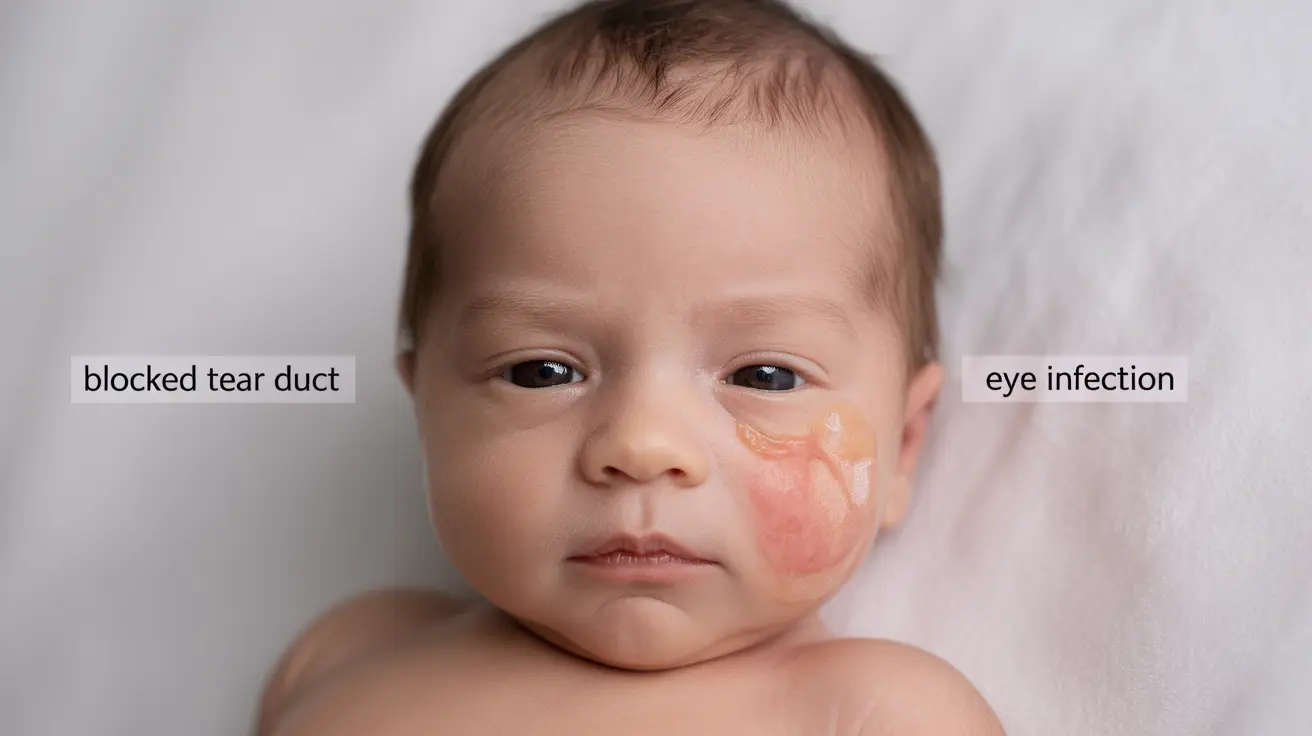Noticing yellow eye discharge in your newborn can be concerning for any parent. This common condition affects many babies in their first few months of life and can stem from various causes, ranging from normal tear duct development to infections requiring medical attention. Understanding the underlying causes and proper care methods is crucial for ensuring your baby's eye health.
This comprehensive guide will help you identify the cause of your newborn's eye discharge, learn appropriate home care techniques, and recognize when medical intervention is necessary.
Common Causes of Yellow Eye Discharge in Newborns
The two primary causes of yellow eye discharge in newborns are blocked tear ducts and eye infections. Understanding the difference between these conditions is crucial for proper treatment.
Blocked Tear Ducts
Blocked tear ducts occur in approximately 6-20% of newborns and typically resolve on their own by the baby's first birthday. This condition happens when the tear drainage system hasn't fully developed, causing tears and natural eye secretions to build up and create discharge.
Eye Infections
Several types of eye infections can cause yellow discharge in newborns, including:
- Bacterial conjunctivitis (pink eye)
- Chemical conjunctivitis from eye drops given at birth
- Viral conjunctivitis
- Neonatal ophthalmia
Signs and Symptoms to Watch For
Different conditions present with distinct characteristics that can help identify the underlying cause:
Blocked Tear Duct Symptoms
- Yellow or white discharge
- Watery eyes
- Discharge primarily after sleeping
- No redness or irritation
- Typically affects one eye
Infection Symptoms
- Thick yellow or green discharge
- Eye redness
- Swelling around the eye
- Light sensitivity
- May affect both eyes
- Signs of discomfort
Home Care and Treatment Options
Proper care of your newborn's eye discharge is essential for preventing complications and promoting healing:
General Care Guidelines
- Clean the affected eye(s) with warm water and a clean cloth
- Wipe from the inner corner outward
- Use a fresh cloth section for each wipe
- Keep the eye area dry
Blocked Tear Duct Massage
For blocked tear ducts, gentle massage can help:
- Place clean finger at corner of eye near nose
- Apply gentle pressure
- Massage downward along the tear duct
- Perform 2-3 times daily
When to Seek Medical Care
Contact your pediatrician immediately if you notice:
- Severe redness or swelling
- Increasing discharge despite home care
- Signs of pain or discomfort
- Fever
- Light sensitivity
- Discharge that persists beyond two weeks
- Any changes in vision or eye appearance
Frequently Asked Questions
What causes yellow eye discharge in newborns and how can I tell if it is a blocked tear duct or an infection?
Yellow eye discharge in newborns is typically caused by either a blocked tear duct or an infection. A blocked tear duct usually produces mild discharge without redness and affects one eye, while infections often cause thicker discharge with redness and can affect both eyes.
How should I care for my newborn's yellow eye discharge at home and when should I see a doctor?
Clean the affected eye regularly with warm water and a clean cloth, wiping from inner to outer corner. See a doctor if symptoms worsen, persist beyond two weeks, or are accompanied by fever, severe redness, or signs of pain.
What are the signs that yellow eye discharge in a baby could be conjunctivitis requiring medical treatment?
Signs of conjunctivitis include thick yellow-green discharge, significant eye redness, swelling, light sensitivity, and irritability. These symptoms, especially when affecting both eyes, typically require medical evaluation and possible antibiotic treatment.
How is a blocked tear duct in newborns treated and when might surgery be needed?
Blocked tear ducts are initially treated with gentle massage and cleaning. If the condition persists beyond 12 months or causes frequent infections, a simple surgical procedure called probing may be recommended to open the duct.
Can yellow eye discharge in newborns lead to complications and how can parents prevent eye infections?
While most cases resolve without issues, untreated eye infections can lead to serious complications. Prevent infections by maintaining good hygiene, washing hands before touching the baby's eyes, and keeping the eye area clean and dry.




